Morning Routine Kindergarten Teachers Swear By for Happy Classrooms
Disclosure: This post may contain affiliate links, meaning I may get a small commission if you decide to make a purchase through my links, at no cost to you.
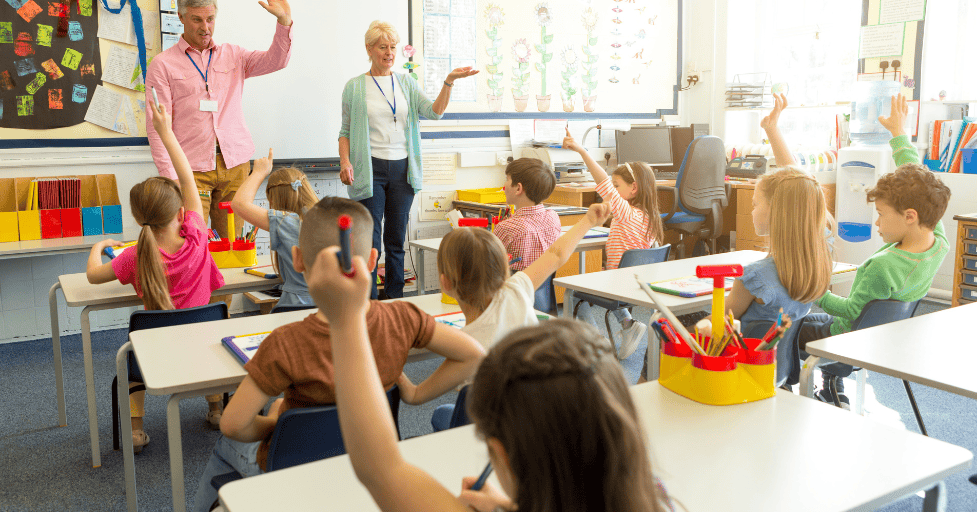
Imagine walking into a classroom filled with twenty-three five-year-olds running wild. Backpacks are everywhere, tears are flowing, and chaos is the norm. That’s when I knew I had to make a change!
Related Articles
Positive Discipline in Everyday Teaching
Positive Discipline Techniques PDF for Home and Classroom
As a former preschool teacher, I learned that the first thirty minutes are crucial. A good morning routine kindergarten teachers use can make all the difference.
I’ve spent years perfecting these strategies. They’ve turned chaos into calm, productive starts. These aren’t just theories. They’re proven methods that work with real kids in real classrooms.
If you’re feeling overwhelmed or want to improve your kindergarten morning schedule, you’re in the right place. We’ll explore practical steps to create calm, happy learning spaces. Let’s take a look at the techniques that will make those first moments with your students a joy!
Key Takeaways
- Structured morning routines reduce classroom chaos and student anxiety
- Consistent daily schedules help children feel secure and confident
- Simple visual cues and procedures create independent learners
- Peaceful mornings set a positive tone for the entire school day
- Effective routines save teachers time and reduce stress levels
- Student engagement increases when expectations are clear and predictable
Why Your Morning Routine Sets the Foundation for Learning Success
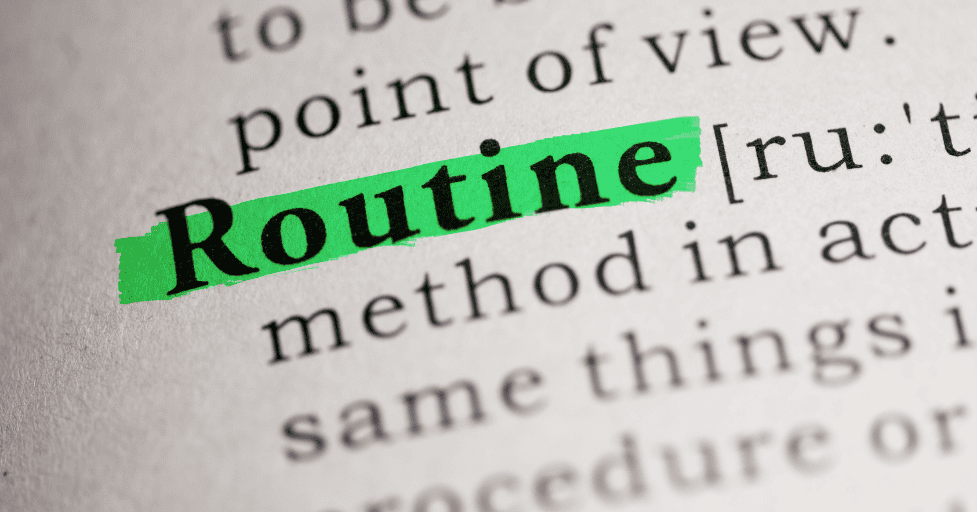
As a preschool teacher, I learned something special. The first 30 minutes of school are truly magical. They set the tone for the whole day.
I used to think morning routines were just about getting kids settled. But I was wrong! A good morning routine actually prepares kids for success all day long.
When kids know what to expect, their stress goes down. This makes them curious and ready to learn.
I’ve seen shy kids become confident learners. Anxious kids become eager participants. It’s all because of our early childhood daily rituals that make them feel safe and valued.
Science supports this too! Consistent routines help kids develop important skills. These skills are the foundation for all future learning.
| Morning Routine Benefit | Impact on Learning | Long-term Development |
|---|---|---|
| Reduced Anxiety | Better focus and attention | Improved emotional regulation |
| Predictable Structure | Enhanced memory retention | Stronger executive function skills |
| Social Connection | Increased participation | Better peer relationships |
| Sense of Belonging | Higher engagement levels | Improved self-confidence |
Classroom morning activities are exciting because they have a lasting impact. When kids feel secure and connected, they’re more open to learning.
They ask more questions and try new things. They handle mistakes better too.
One girl named Sarah used to hide behind her mom. But after our welcome routine, she started coming into class with a big smile. It took time, but it worked because we gave her something she could rely on.
Investing in a morning routine is more than classroom management. It’s about giving every child a great start to their learning journey every day.
Morning routines work for every child. They help both the energetic and the quiet ones succeed.
Step 1: Master Your Pre-Arrival Classroom Setup
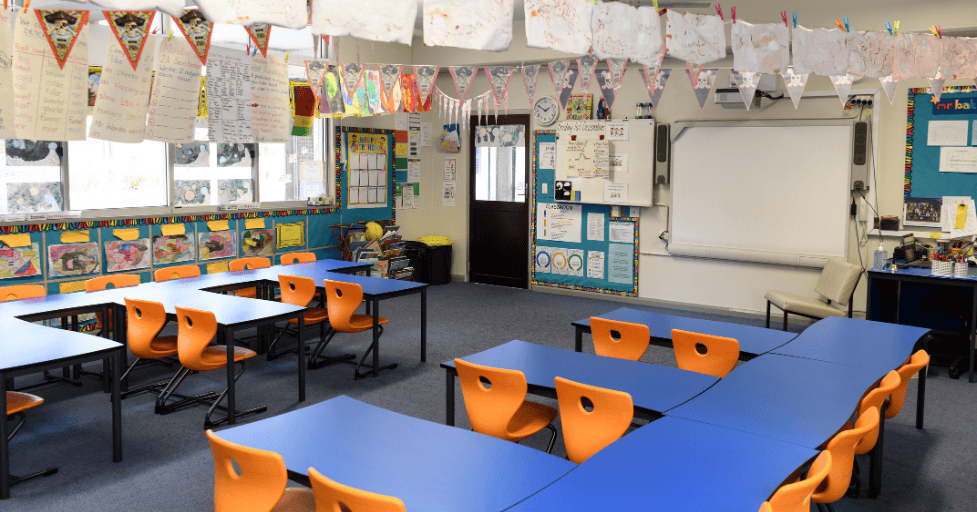
Starting the day smoothly is all about preparation, not just for the kids. I learned that I couldn’t just rush in just before the kids arrived, while trying to get everything ready. That would have been a mess!
I discovered the power of school day preparation. Now, I tell teachers to get to school at least 30 minutes early. It’s not just about getting there early. It’s about setting up for success with early learning routines!
Arranging Your Physical Learning Environment
Every morning, walk through your classroom with fresh eyes. Are your learning centers inviting and easy for little hands to reach? I’ve found that arranging furniture at child height makes a big difference.
Make sure there are clear paths for small feet to follow. Remove any obstacles that could cause falls. Your kindergarten students should feel safe and confident moving around.
Set up cozy reading nooks and activity areas that draw children in. I love using colorful rugs and soft lighting to make each corner special and welcoming.
Organizing Essential Materials and Supplies
Keep everything you need for the first hour within arm’s reach. Nothing disrupts a morning routine like searching for supplies while kids wait.
Prepare your materials the night before when you can. Set out books for story time, arrange art supplies, and check your technology. This saves time and stress in the morning.
Make sure there are designated spots for common items like tissues and extra pencils. When everything has a home, your classroom runs smoothly.
Preparing Your Teacher Mindset
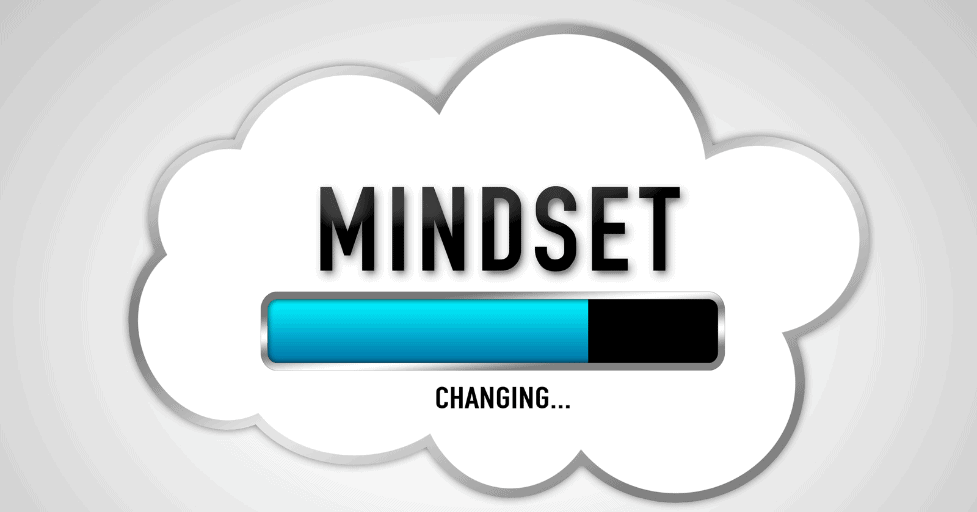
Spend those final minutes before students arrive getting your mindset ready, not just your materials.
Take three deep breaths and imagine your students’ smiling faces. Set a positive intention for the day. What do you want your kindergarteners to feel and learn today?
When you’re calm and prepared, that calm energy spreads to everyone in your classroom. Your students can tell when you’re stressed, but they also feel your confidence and joy.
This pre-arrival ritual will change not just your mornings, but your whole teaching experience. Those extra 30 minutes are worth it for a better school day!
Step 2: Create Welcoming Arrival Procedures
Creating welcoming arrival procedures can turn chaotic mornings into joyful starts for your kindergarten classroom. Those opening minutes set the emotional tone for the rest of the day.
When you have structured morning time with clear expectations, children feel secure and confident. They know what to do when they arrive. This predictability helps anxious kids settle in faster and gives energetic kids a positive outlet for their excitement.
Positioning Yourself for Maximum Impact
Here’s a key lesson I wish I knew earlier – where you stand during arrival is crucial! I used to hide behind my desk, frantically checking details. I then started to stand at the classroom door like a welcoming host. I greet each child with a smile and a personal welcome. “Good morning, Sarah! I love your sparkly shoes today!” This simple change changed my morning atmosphere.
Your strategic positioning allows you to:
- Monitor who’s arriving and how they’re feeling
- Redirect any confusion before it spreads
- Celebrate each child’s presence immediately
- Catch potential issues early
Establishing Clear Entry Expectations
Visual cues are your secret weapon for successful kindergarten arrival procedures. I created picture schedules that show the steps. Even non-readers can follow these guides independently!
I make it fun by using colorful arrows on the floor. Children love following the “rainbow path” to their morning tasks.
Clear expectations include:
- Enter quietly and find your morning spot
- Hang up belongings in designated areas
- Choose a quiet morning activity
- Wait for the official morning greeting
Streamlining Backpack and Belongings Management
Nothing creates morning chaos faster than a jam at the coat closet! I solved this by creating special “landing zones” for different belongings. Each item has its own home, and kids know where to put things.
My system works like magic:
- Backpacks hang on numbered hooks matching each child’s cubby
- Lunch boxes slide into labeled slots in the lunch bin
- Show-and-tell items go in our special sharing basket
- Take-home folders slip into the communication pocket
When children master these routines, they beam with pride! They feel capable and independent, boosting their confidence for the day. Plus, you avoid that dreaded morning bottleneck that used to drive me crazy.
Remember, these first few minutes are precious. Make them count with warmth, clarity, and plenty of encouraging smiles!
Step 3: Design Your Morning Routine Kindergarten Schedule
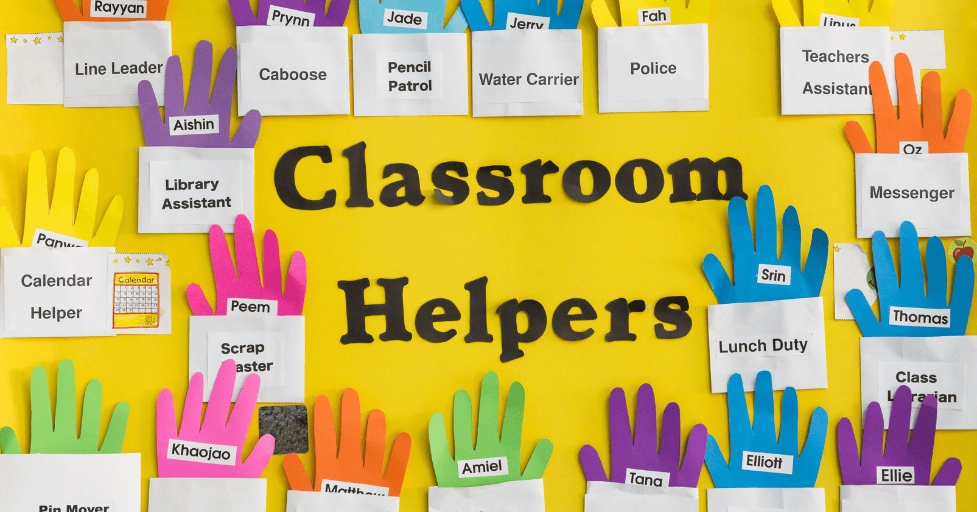
At one point, I tried to fit too many activities into our morning routine. I thought more was better, but it was overwhelming for four-year-olds. They need time to relax and adjust between activities.
Now, I follow the “less is more” rule for kindergarten classroom management. After trying many times, I found the perfect balance: 45 to 60 minutes of morning activities. This time is just right to achieve our goals without feeling rushed.
Timing Each Component for Success
Here’s a plan that works wonders in real classrooms:
- 10 minutes: Arrival and settling in (unpacking, greeting friends, quiet transition activities)
- 15 minutes: Morning circle time (calendar, weather, sharing, songs)
- 20 minutes: Independent morning work or learning centers (3 to 4 centers, 5ish minutes)
- 10 minutes: Cleanup and transition to the next part of our day
These activities flow smoothly from one to the next. Kids know what’s coming next, which reduces anxiety and behavior issues. The predictable rhythm makes even the most energetic students feel secure and ready to learn.
The 20-minute independent work block has been a big help. It’s long enough for meaningful learning but short enough to keep focus. Plus, it gives me time to check on students or handle morning tasks.
Building Flexibility into Your Framework
The secret to a great morning routine is flexibility within structure. Some days, kids might need more time for sharing stories. Other days, they’ll finish activities faster than expected.
I always have a few “pocket activities” ready:
- Simple fingerplay songs or chants
- Quick movement games like “Simon Says”
- Quiet activities like “I Spy” or counting games
- Brain breaks with stretching or deep breathing
These activities can adjust based on your needs. If you’re ahead of schedule, sing a fun song. If you need to fill extra time, play a quick game.
The goal is to create a predictable flow that supports effective kindergarten classroom management. When children feel secure in the routine, they can focus on learning and growing.
Those spontaneous learning moments are the best part of teaching! Your flexible framework lets you embrace teachable moments while still keeping a structured routine that your students need.
Step 4: Implement Engaging Morning Circle Time Activities
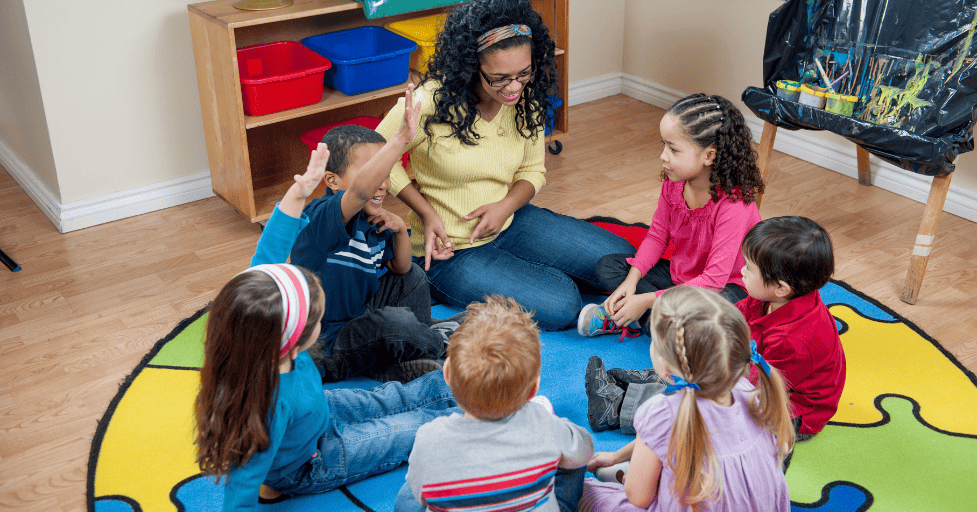
The most powerful part of any early childhood morning schedule is when kids gather in a circle. I still get excited thinking about those special moments. Ten little faces looked up at me with wonder and anticipation!
But, it took some trial and error to keep everyone engaged. I learned to make every child feel important in our classroom. When you nail your morning circle time, you’re not just filling time. You’re building the foundation for everything else that happens in your day.
Interactive Calendar and Weather Routines
Your calendar routine should be more than just pointing at numbers on a wall! I tried to make calendar time and weather interactive and exciting.
Start by letting different children take turns being your “calendar helper” each day. They get to point to today’s date, count how many days we’ve been in school, and look for patterns in the numbers. Kids love having this special job! We had a day’s of the week song and a months of the year song that we had motions to (the makarana).
Here’s what makes calendar time engaging:
- Count together out loud – it builds number recognition
- Look for number patterns and talk about them
- Connect dates to special events or birthdays
- Use different voices, rhythms, or songs when counting
- Let kids predict what tomorrow’s date will be
Weather discussions become mini science experiments when you step outside the box. We don’t just look outside and say “sunny” – we make predictions, talk about what clothes we need, and even act out different weather with our bodies!
Meaningful Sharing and Discussion Time
This is where the real magic happens in your morning circle time. But here’s the thing – you can’t just let kids randomly share whenever they want, or you’ll have chaos on your hands.
I give each child a special sharing day throughout the week. This way, everyone gets their moment to shine, and no one feels left out. On Monday, maybe it’s the kids whose names start with A-E. Tuesday brings F-J, and so on.
Make sharing time meaningful by giving kids specific prompts:
- Share something that made you happy this weekend
- Tell us about a book you read at home
- Describe your favorite family tradition
- Share a kind thing someone did for you
The other kids learn to be good listeners by asking one question or giving one compliment to the sharer. This builds those crucial social skills they’ll need forever!
Movement and Song Integration
Oh my goodness, movement changes everything! Kids need to move their bodies, especially first thing in the morning. I wiggle my fingers for sunny days, stomp my feet for thunderstorms, and sway like trees in the wind.
Your songs don’t have to be fancy or complicated. Simple finger plays work wonders:
- “Five Little Ducks” with hand motions
- “Head, Shoulders, Knees and Toes” for body awareness
- “If You’re Happy and You Know It” with creative actions
- Weather songs that match your daily forecast
The beautiful thing about adding movement to your morning circle time is that you’re hitting so many learning goals at once. Kids are building language skills, practicing math concepts, and developing those important social-emotional connections that will serve them for years to come!
Step 5: Set Up Independent Morning Work Stations
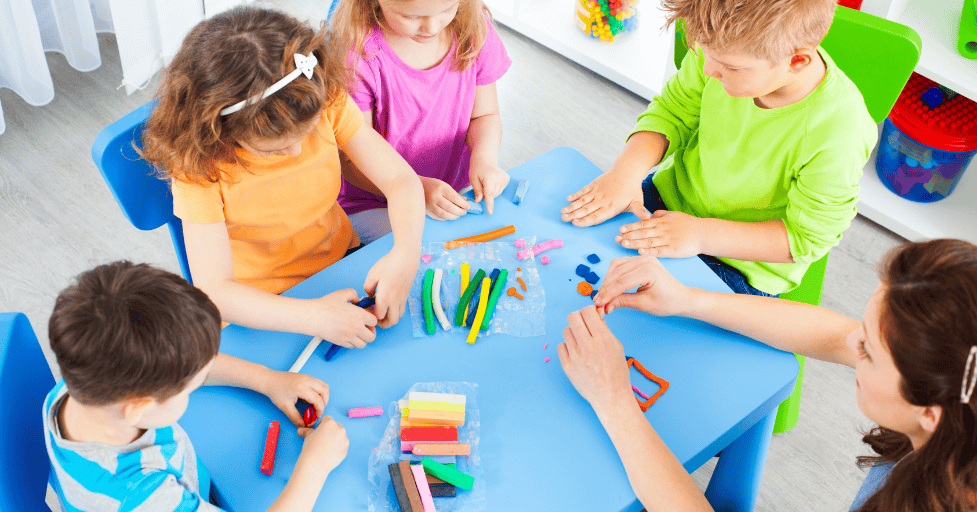
Morning work stations became my secret weapon for calm, focused classroom mornings. The first time I saw my preschoolers know exactly where to go was amazing. The nervous energy turned into purposeful learning buzz!
These stations aren’t just busy work. They’re designed to honor each child’s unique learning style. Some need quiet, while others love hands-on activities. When you offer choice, every student finds their perfect start to learning.
Designing Self-Directed Learning Centers
Creating stations for kids to navigate on their own requires careful planning. The payoff is huge. I made each center self-explanatory with visual cues and clear boundaries.
My best stations include a cozy reading nook and a writing center with step-by-step instructions. I also have hands-on math manipulatives with clear start and end points.
The key is making everything engaging yet manageable. I use colorful bins, laminated cards, and spaces for finished work. This lets kids start without waiting for me, keeping the preschool and in this case, kindergarten daily schedule smooth.
Rotating Educational Activities
Rotation systems keep stations fresh and exciting. I use colored cards or symbols to show kids where to start each day. They might start at the art station one week and the science table the next.
This approach prevents boredom and ensures kids try different activities. It also helps manage classroom traffic and reduces conflicts. I plan 3-4 stations with 5 or so minute rotations, based on class size and needs. Stations may be as long as 10 minutes if the students are engaged.
Rotating activities helps kids develop confidence in different areas. Shy students shine at quiet stations, while energetic ones do well at movement-based ones. When kids choose their morning learning, they start feeling successful and engaged.
Once you see students managing their morning work while you handle other tasks, you’ll wonder how you taught without these stations!
Step 6: Perfect Your Transition Management Techniques
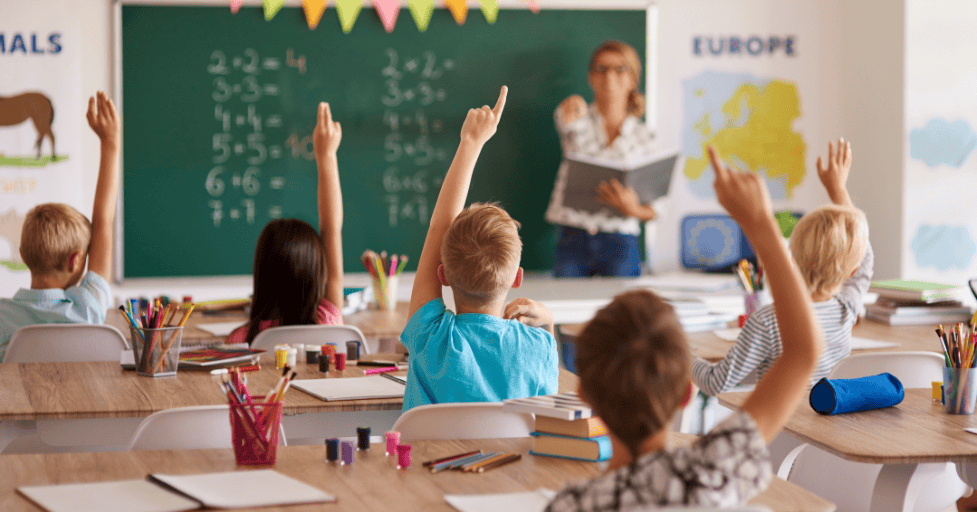
Managing twenty-five kindergarteners can be tough. But I found ways to make it easier. As a preschool teacher, I learned that smooth transitions are key to a peaceful classroom.
Smooth transitions take planning and practice. But once you get it right, your day will run smoothly. It’s like magic!
Establishing Clear Signal Systems
I started using the “1-2-3 Magic“ system. It turned chaos into order. Here’s how it works: one clap means “finish what you are doing,” two claps mean “clean up,” and three claps mean “get ready to move!”
This system gives kids clear rules and time to think. You can adjust it to fit your classroom. Some use chimes, others hand signals, and I’ve seen great results with call-and-response.
Consistency is key. Choose a signal and use it every day. Your students will learn it fast!
Incorporating Movement and Brain Breaks
We turn transitions into fun activities. We might gallop to the door or tiptoe to our next spot. These activities help kids release energy and stay focused.
These transitions do more than just move kids. They help them manage their energy and make learning fun. Try these ideas:
- Animal walks to different centers
- Counting steps or clapping rhythms while moving
- Simple stretches between seated activities
- Dancing to short musical cues
These breaks keep kids engaged and prevent restlessness.
Preventing and Addressing Disruptions
I anticipate problems and prepare for them. Some kids need extra time, so I warn them ahead. Others feel important with special jobs during transitions.
When disruptions happen, stay calm and quickly change plans. Being flexible is crucial. The goal is to keep the day flowing smoothly.
It’s not about being perfect. It’s about making transitions fun and keeping everyone engaged. Trust me, it makes a big difference!
Step 7: Troubleshoot Common Morning Routine Challenges
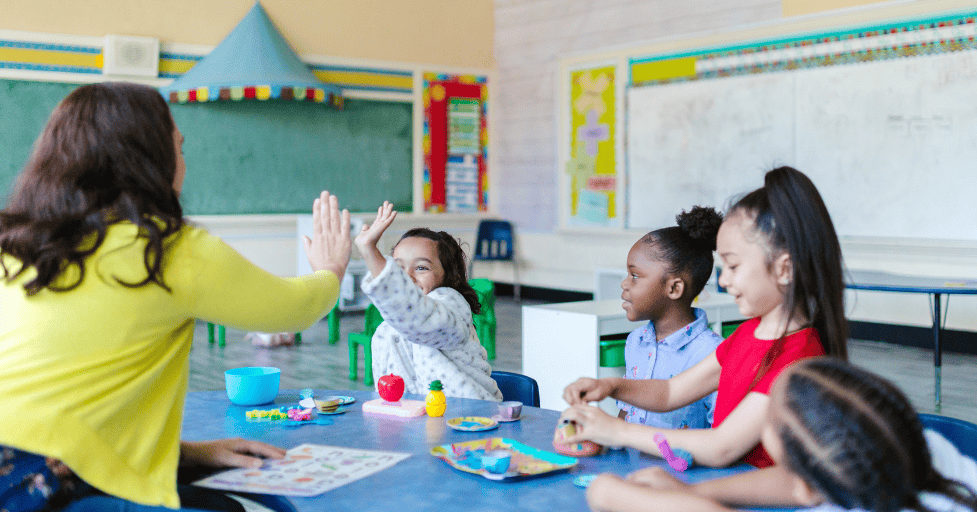
Every teacher faces morning routine challenges, and it’s normal. I used to stress when things didn’t go as planned during our morning circle. But I learned that being flexible and kind is just as important as being structured.
The best teachers aren’t those who never face problems. They’re the ones who solve them with creativity and care. Here are some strategies that made my classroom calm and organized.
Handling Late Arrivals Gracefully
Late arrivals used to upset my morning routine. I worried they would disrupt our flow and make others lose focus. Then I found the power of preparation.
I set up a “catch-up station” near the entrance. It has a visual schedule showing what we’ve done and what’s next. This helps late-arriving students catch up without feeling embarrassed.
The station also has a basket with name tags and materials for current activities. This lets children join in easily without interrupting. Early education transitions become smoother when everyone knows what to do.
- Place a visual schedule at child’s eye level
- Include current activity materials in an easy-to-find basket
- Assign a classroom helper to welcome late arrivals
- Keep a calm, welcoming tone when greeting tardy students
Supporting Emotional Needs
Morning emotions in kindergarten range from anxiety to excitement. Some children are anxious about the day, while others are still waking up. And then there are those bursting with energy!
I learned to read these emotional cues and respond with care. Sometimes, I offer a quiet corner for anxious children. Other times, I provide extra movement for the high-energy ones.
Consider keeping a “feelings toolkit” ready during our preschool or kindergarten morning circle. It includes stress balls, fidget toys, and calming books. When a child struggles with big emotions, we’re ready to help.
Remember, we’re not just managing behaviors – we’re helping little humans navigate big feelings and learn to regulate themselves.
Creating a safe emotional space means accepting all feelings. I might say, “I see you’re feeling worried about today. That’s okay. Let’s find something that helps you feel better.”
Managing Different Energy Levels
Every morning brings a mix of energy levels. You’ll have sleepy students and others bursting with energy.
The key is having multiple strategies ready. I’m not afraid to adjust our routine when needed. Flexibility doesn’t mean chaos – it means responsive teaching.
For high-energy children, I add more movement to our early education transitions. We might do jumping jacks or march to our next station. For quieter children, I offer calming activities like drawing or reading.
- Create both active and calm activity options
- Use movement as a tool, not a punishment
- Offer choices when possible to give children control
- Adjust your expectations based on individual needs
- Remember that energy levels can change throughout the morning
When we tackle challenges with empathy and creativity, we turn problems into growth opportunities. Your morning routine becomes stronger when it can adapt without breaking.
Step 8: Maintain Consistency While Adding Variety
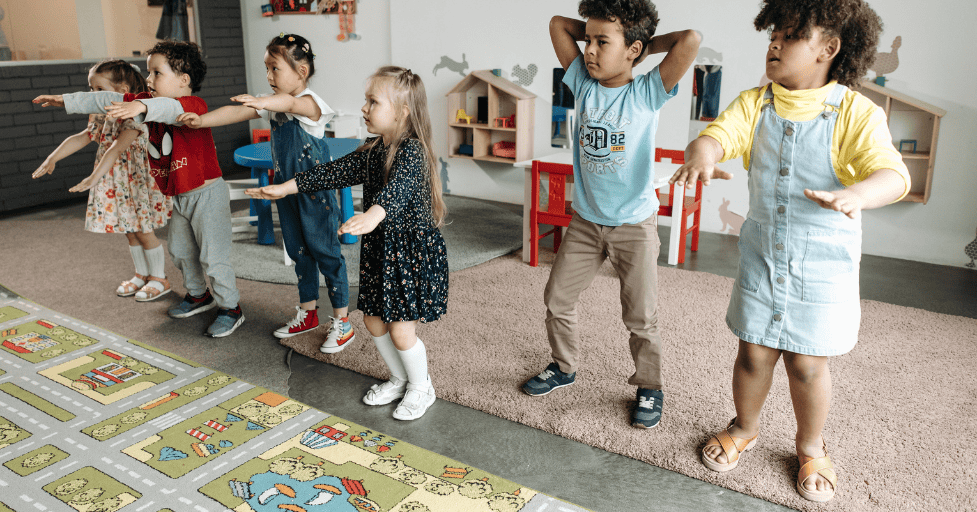
After years of teaching kindergarten, I’ve found the secret to keeping your school day start routine exciting and consistent. It’s not about choosing between the two. It’s about blending them together perfectly!
Kids love knowing what’s coming next, but they also need something new to keep them interested. Think of your morning routine as a strong base that can change with the seasons. The structure stays the same, but the activities get a fresh twist every now and then.
“The best teachers know that routine and creativity aren’t opposites – they’re dance partners.”
Integrating Weekly Themes
Weekly themes turn our early learning morning rituals into exciting adventures! I plan themes that fit into our daily activities without changing our routine.
For “Community Helpers” week, our song is about firefighters. Our calendar helper wears a special hat. Our movement activity is like driving to different learning stations.
This makes everything feel new, even though the routine stays the same. Here are some theme ideas that work well:
- Transportation week – count toy cars, sing about trains, move like airplanes
- Animal adventures – make animal sounds during transitions, count zoo animals
- Space exploration – blast off to learning centers, count planets
- Under the sea – swim to stations, count fish, sing ocean songs
Planning these themes ahead of time is key. I plan my themes for the whole month, making sure I have all the materials ready. This saves me from that stressful Sunday night rush!
Adapting for Seasons and Special Events
Seasonal changes offer a chance to refresh your morning routine without losing its comforting feel. These changes honor the year’s rhythm while keeping activities fresh and relevant.
In fall, we count colorful leaves instead of regular manipulatives. Winter brings snowflake patterns to our math station. Spring means planting seeds during science time. Summer focuses on beach adventures and outdoor fun.
Special events like birthdays and holidays add extra sparkle. The trick is to keep these changes small and manageable. You’re not changing everything – just adding special touches!
Here’s how I adapt for the seasons:
- Keep the timing and sequence the same
- Change only the content or materials, not the activity type
- Prepare seasonal materials in advance and store them in labeled bins
- Introduce changes gradually over a few days
For example, in December, our morning song might include holiday wishes. Our counting activity uses candy canes or ornaments. Our movement break becomes “reindeer exercises.” But we still do greeting, counting, and movement at the same times!
The goal is to create excitement and joy while keeping a sense of security. When you find this balance, every day feels special while still providing the foundation kids need to learn and grow.
Real-World Insights from My Teaching Experience
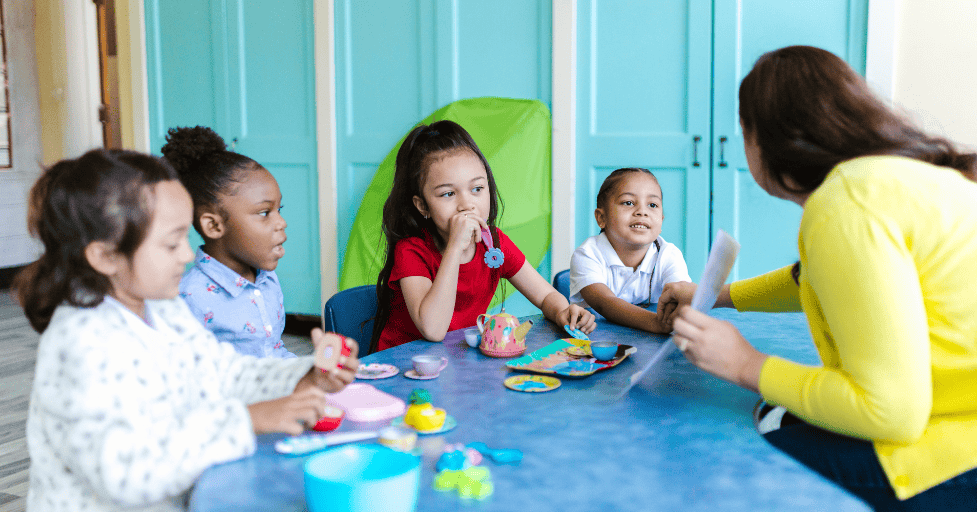
Let me share some real-world stories from my preschool teaching days. These experiences taught me a lot about morning routines. They showed me how to create effective structured morning time for kids in ways textbooks can’t.
I’ll never forget my biggest classroom disaster. I introduced three new activities at once during our morning routine. It was complete chaos!
Kids were confused, and our morning circle time kindergarten session turned into chaos. That day taught me a valuable lesson. Always introduce one new element at a time. Give kids plenty of practice before adding more.
Lessons Learned from Classroom Successes and Mistakes
My most memorable success story is about a little girl. She would cry every morning, missing her mom. I created a special “comfort corner” for her.
This corner had her favorite things. It helped her start her day before joining our structured morning time for kids. Within a week, she was ready for our morning activities with a smile.
Then there was a little boy who was a bundle of energy who struggled during quiet time. Traditional methods didn’t work for him. So, I made him our “supply helper” during independent work time.
Adapting Routines for Individual Student Needs
This little boy delivered materials to different learning stations. This gave him the movement he needed while helping our classroom run smoothly. His energy became our secret weapon!
These experiences taught me that successful morning circle time kindergarten routines aren’t about finding one perfect system. They’re about staying flexible and really watching your students closely.
Every group of children is different. What works for one class might need major tweaking for another. The key is never being afraid to adjust your approach when something isn’t clicking.
Some mornings may not go according to plan, and that’s perfectly okay! The best teachers I know are the ones who can laugh at their mistakes, learn from them, and try something new tomorrow.
Conclusion
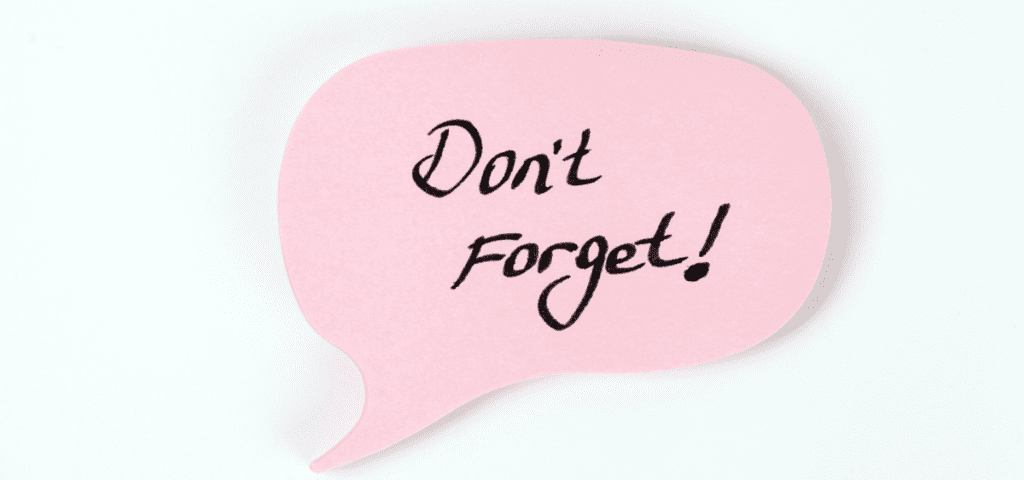
Working with young learners for years has taught me a lot. Effective morning routines don’t come easily. Each classroom is different, bringing its own challenges and joys.
Your morning routine will change as you learn more about your students. Some days will go smoothly, while others might need quick changes. It’s okay! The important thing is to be flexible and keep a routine that makes your students feel safe and ready to learn.
Every successful morning routine is built by a teacher who truly cares. Your students will feel that love and care as soon as they enter your classroom.
Begin with one or two strategies that you feel are right for you. Gain confidence with those before adding more. Your classroom will appreciate the consistency and care you show every morning.
Trust yourself in this journey. You know your students best, and that knowledge will help you find the perfect morning routine for them. Here’s to many happy mornings filled with learning, laughter, and those special moments that make teaching so rewarding!
GET FREE ACCESS TO OUR LIBRARY OF FREE PRINTABLES AND RESOURCES!
Enter Your Name and Email for FREE Access to our Library of FREE Home and Family Printables Series!





